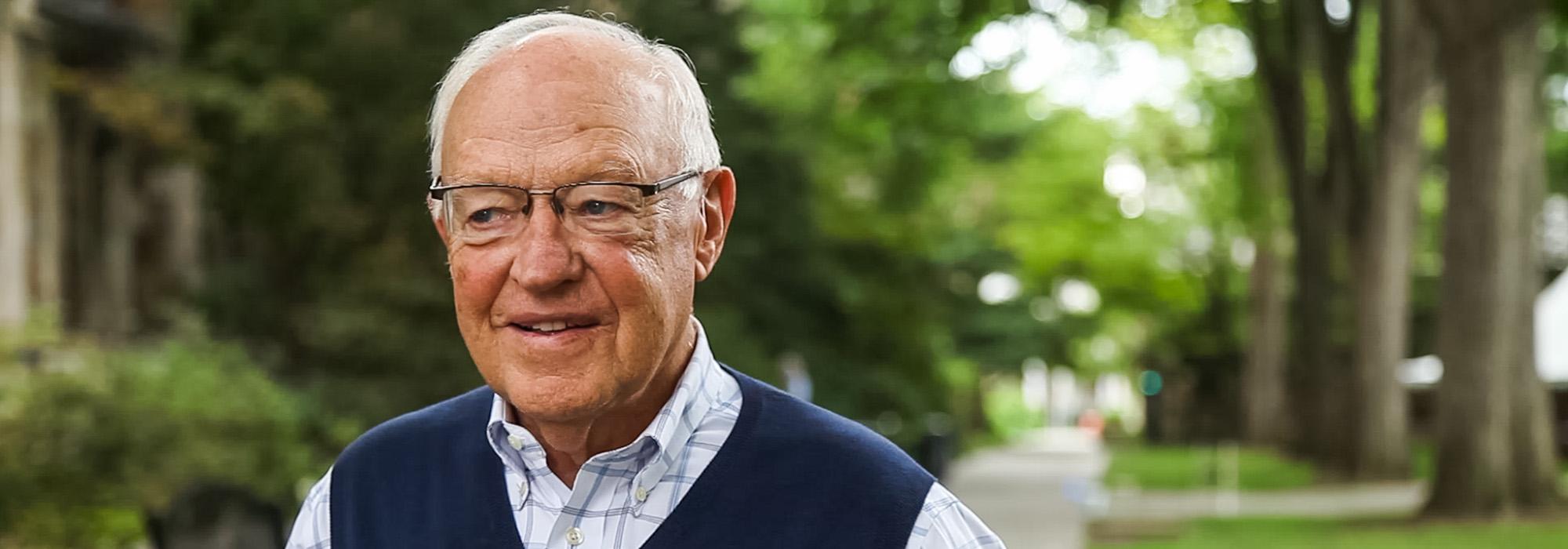William “Bill” Johnson subject of new Pioneers Video Oral History from The Cultural Landscape Foundation
Media Contact: Nord Wennerstrom | T: 202.483.0553 | M: 202.225.7076 | E: nord@tclf.org
Johnson Project is the 14th in the ongoing, award-winning Pioneers of American Landscape Design® video oral history series that documents, collects, and preserves first-hand information from pioneering landscape architects/educators
Washington, DC (January 5, 2017) – The Cultural Landscape Foundation (TCLF) today announces the release of a new Pioneers of American Landscape Design® video oral history with acclaimed landscape architect William “Bill” Johnson. This is the 14th in the award-winning Pioneers series, which TCLF launched in 2003 to document, collect, and preserve first-hand information from pioneering landscape architects/educators. The 104-minute long Johnson oral history is parsed into 32 one- to six-minute clips and organized under the themes of “biography,” “design,” and “projects.” Over the course of a career lasting more than 60 years, Johnson has been widely influential as both a practitioner and an academic.
Major projects featured in the oral history include: design guidelines for 27 miles of Chicago’s lakefront; the University of Michigan, Ann Arbor, campus expansion plan; the Everett, Washington County Campus; two sites in Japan (done with Peter Walker); and others.
“Outdoor memories are very poignant,” Johnson says in the first biography clip, and they are omnipresent in the oral history from recollections of his hometown of Lansing, MI, to his international travels. Johnson studied landscape architecture at Michigan State University and graduated in 1953, but it was during his military service in Western Europe that he got to see the powerful role landscape architecture played in Postwar reconstruction. Following his military service, he completed an M.L.A. at Harvard’s Graduate School of Design (GSD). While in Cambridge, he worked for Hideo Sasaki and was an instructor at the GSD. Returning to the Midwest to practice, Johnson formed Johnson, Johnson and Roy (JJR) in 1961, a partnership with his brother Carl and friend Clarence Roy. A master plan for the University of Michigan in Ann Arbor established the firm’s approach of integrated planning and analysis. The search for fitness, harmony, and community involvement became William Johnson’s core design philosophy and a trademark of JJR’s work.
Throughout his career, Johnson blended practice, at JJR (1961-1975) and as William J. Johnson Associates (1980-1992), with his commitment to education. A professor of landscape architecture beginning in 1958, he served as dean of the School of Natural Resources at the University of Michigan from 1975 to 1983, and became Professor Emeritus in 1988. Johnson’s practice focused on campus, resort, and community planning, as well as parks and recreation projects. He formed a partnership with his GSD classmate and longtime friend Peter Walker in 1992, which led to many national and international commissions. Johnson was named a Fellow of the American Society of Landscape Architects (ASLA) in 1973 and awarded the ASLA Medal in 1986. He currently resides in Holland, MI, working on pioneering landscape infrastructure projects.
“We are very grateful to the extended landscape architecture community, particularly Robert Chipman, Charlotte Johnson, Sandy Fischer, and SmithGroup JJR, for supporting the Johnson oral history,” said Charles A. Birnbaum, TCLF’s president and CEO. “We’re also honored that Johnson and other practitioners, including Lawrence Halprin and Cornelia Hahn Oberlander, have entrusted us to help tell their stories and inspire future generations.”
The Johnson oral history was shot on location in August 2015 at significant projects in Michigan and in his home/studio. The goal of the oral history series, which received ASLA’s 2010 Award of Excellence (Communications) is to make each practitioner’s story available to future generations of stewards, students, designers, researchers, and heritage travelers. In addition to producing and distributing the video oral history, TCLF has produced and published a written transcript of the oral history, and collected a series of written recollections from friends and colleagues. Charles A. Birnbaum is the series executive producer and conducted the interviews; Barrett Doherty, TCLF’s visual content director, conducted the videotaping and post-production editing; and Brian Cho scored the oral history.
Support for the exhibition was provided by Bob Chipman, Charlotte Johnson, Sandy Fischer, Townscape, Inc, NBBJ, The Power Foundation, Charlie Wenzlau, Harley Ellis Devereaux, Spurlock Landscape Architects, Martin Poirier, Site Workshop, James R. Turner, Hagenbuch Weikal, William Rabben, Chris and Jim MacInnes, Dale Sass, Jane Sullivan, Frank Clements, Bob & Jane Holderman, Jane Sullivan, Inga Blackinton, Deb Guenther, Martin Regge, Elizabeth Jacks, Jack Goodnoe, Anna Toogood, Wendie McAllaster, and Curt Westergard.
The American Society of Landscape Architects is the Annual Sponsor.
About The Cultural Landscape Foundation
The Cultural Landscape Foundation (TCLF), founded in 1998, is a 501(c)(3) non-profit founded in 1998 to connect people to places. TCLF educates and engages the public to make our shared landscape heritage more visible, identify its value, and empower its stewards. Through its website, publishing, lectures and other events, TCLF broadens support and understanding for cultural landscapes.
# # #



